Video MGMT System
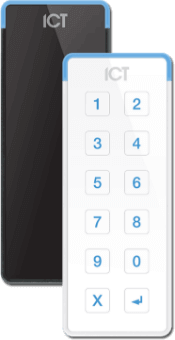 Access Control
Access Control
Voice & Data Wiring
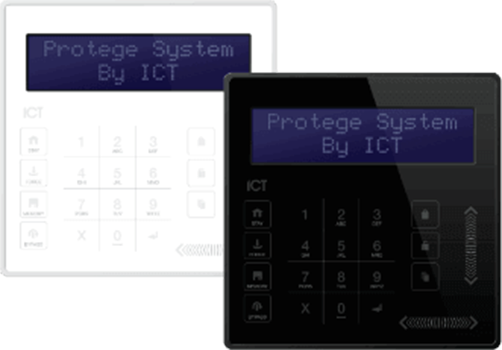 Burglar Alarm
Burglar Alarm
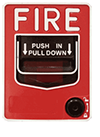 Fire Alarm
Fire Alarm
Video MGMT System
Voice & Data Wiring
The best apartment door locks are smart apartment door locks.
Investing in smart apartment door locks is an excellent way for property managers to deter potential burglars while helping current and future residents feel secure.
Smart lock alternatives to physical keys use credentials like fingerprints, electronic Bluetooth signals, and PIN codes. They grant apartment residents convenient access to buildings and units while significantly improving an apartment's security overall.
By temporarily assigning access privileges or simply unlocking doors remotely via a smartphone app, residents of apartment buildings are empowered to grant temporary entry to relatives, friends, delivery drivers, cleaning services, and other guests.
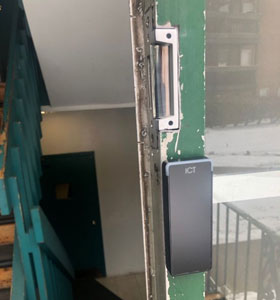
Many residents also appreciate the ability to connect their smart locks with popular smart home systems like Google Assistant and Amazon Alexa.
Smart locks give property managers streamlined oversight over apartment building security. For example, auditing a keyless lock system is easy because all permission and access data is stored on a single access system interface.
Because credential privileges can be changed remotely, there's no need to collect them or change locks when credentials are lost or stolen—allowing for lower operational expenses, less administrative work, and a stronger bottom line.
What's more, smart lock systems let property managers give potential residents temporary access to buildings and units with credentials that have preprogrammed expirations.
By sidestepping the subtle psychological pressures of hovering or busy staff, temporary credentials let potential residents more easily imagine apartment spaces as their own.
Several access control systems exist for smart locks, but not all models are equal.
RFID (Radio-Frequency Identification) locks use radio signal technology to grant access to individuals with RFID cards or key fobs. When the card or fob is presented at an RFID door reader, the reader verifies a code transmitted from a tiny antenna in the credential to a tiny antenna in the reader. Doors unlock only if the system finds a match with preprogrammed site authorizations.

The greatest benefit of RFID credentials is that administrators can remotely adjust their privileges without interacting with credential holders. This makes employee termination less awkward and means that credentials can easily be deactivated and replaced when lost.
PIN and passcode locks use alphanumeric access codes as virtual keys. In addition to a renter's building and unit access code, these locks can usually can be programmed to recognize twenty or more additional codes.
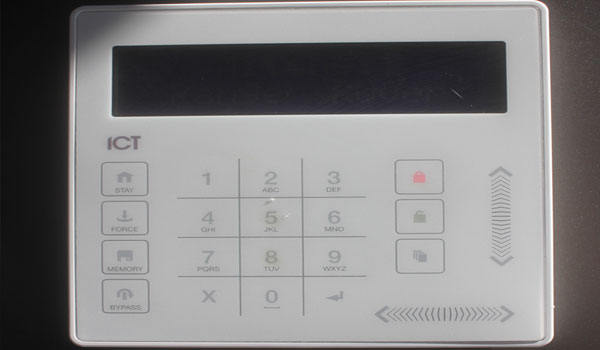
The extra codes allow residents and property managers to grant special temporary access so that cleaning people, delivery drivers, and other guests can open specific doors during specific times.
The most significant criticism of keypad locks involves the possibility that a stranger may observe taps on a keypad to figure out a passcode. For this reason, access code locks that rely on traditional keypads are problematic. Instead, we recommend PIN code and passcode lock systems that use "anti-peep password" touchscreens.
On an anti-peep touchscreen, alphanumeric symbols are positioned differently on the screen whenever a person attempts to enter their PIN or passcode. This varied screen layout makes it impossible for strangers to deduce codes by observing finger taps.
Smart lock technology that relies on biometric recognition provides maximum protection to residents by authenticating their fingerprints before unlocking.
Most fingerprint readers can store twenty to thirty fingerprints at a time, which should be plenty for most apartment units. However, this limit means that fingerprint locks are not a practical option for building entrances and doors that lead to communal areas, such as gyms and laundry rooms.
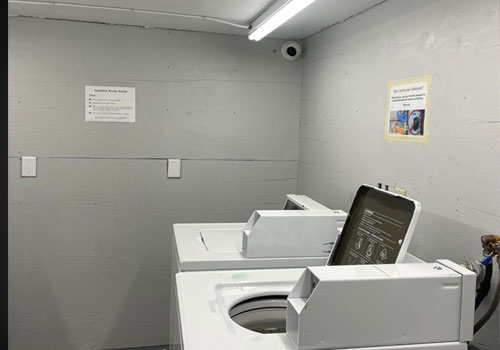
Fortunately, it's possible to install smart fingerprint locks at individual apartment doors while using other access control methods to secure entrances expected to serve more than 20 users.
An important factor to consider when selecting fingerprint scanners for apartment doors is their print-recognition rate.
Fingerprint readers that use optical fingerprint sensors are only able to recognize valid fingerprints about 98 percent of the time—which is not acceptable to most apartment dwellers.
Instead, property managers should opt for fingerprint readers that use semiconductor sensors. Semiconductor sensors are much more reliable and are easily used by children and the elderly.
Bluetooth locks use Bluetooth technology to connect to a user's smartphone, which acts as the access control credential. The lock can be configured to grant access to authorized users when their phone is within a certain range or when a code is entered through a smartphone app that's connected with Bluetooth technology.
Bluetooth locks are convenient, as users do not need to carry a separate access card or fob. Even better, they don't require apartment owners to provide residents with physical credentials.
Before selecting an electronic apartment door lock system for your current and future residents, three factors demand consideration: battery maintenance requirements, Wi-Fi requirements, and how challenging it will be to retrofit existing door locks and other devices with the new smart lock system.
Because smart locks use electricity, they require batteries to function. Every smart lock model will specify a battery type and a range of battery life expectancy.
Some will need to be changed as often as four times a year, so be sure to consider the battery life expectancy of the lock models you consider and be prepared to add battery checks to routine maintenance activities.
A smart lock system with a Bluetooth auto-lock feature requires Wi-Fi access to function. In other words, unless you select a Bluetooth smart lock door reader that provides alternative access methods (such as passcode or PIN code touchscreens, fingerprint readers, or even physical keys), wireless data must be accessible at all Bluetooth door lock locations without fail.
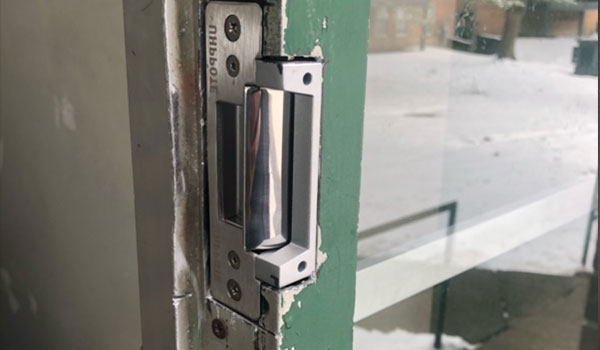
Becausee most electronic door lock systems still use traditional mechanical elements (such as deadbolts, locks, and strike plates) to secure doors physically, it's often possible to save money during installation by reusing many of the mechanical components you already have.

Smart lock models for apartment doors include at least one and sometimes a combination of the following security features: RFID readers, Bluetooth readers, keypads or touchscreens, and biometric scanners.
Our team at Mammoth Security has a lot of experience installing smart locks for apartments. We know which systems to use and how to customize them to provide apartment residents and managers with reliable security and convenience.

Wireless
IP Cameras
Wireless cameras are not reliable enough for commercial use yet. Instead, we use purpose-built antennae to connect hardwired cameras on light poles and buildings.

Phone App
For Camera Systems
Watch live or previously recorded footage on any mobile device. Save it to your phone and e-mail it just like any other video or image.

Increased Resolution
Of 4096×2160
4k or 8MP cameras represent the best value at the moment. Depending on your situation, a 30+ megapixel camera can be installed allowing you to read a seat number from the opposite end of a football field.

Employ The Same Technology As These Companies:


